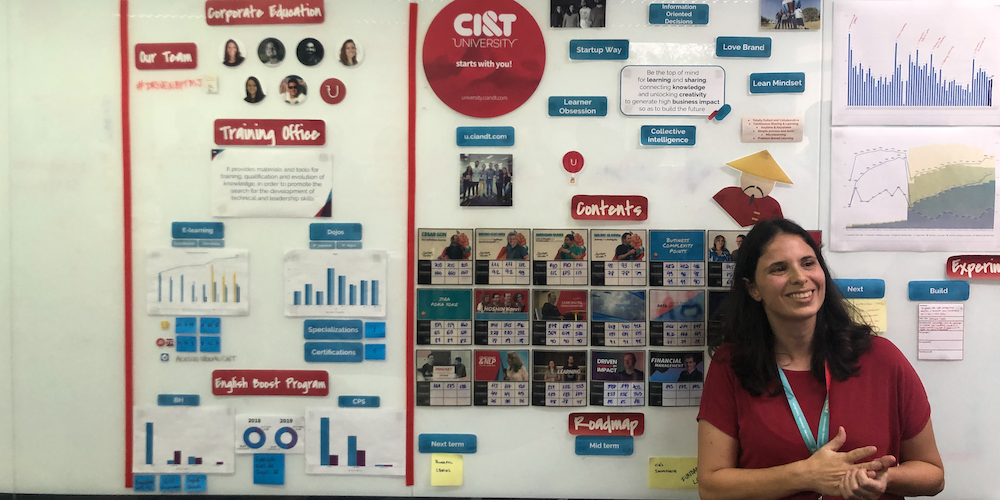
Lean thinking to make a disastrous ERP rollout a success
FEATURE ARTICLE – Danish company Solar has applied lean management principles to the rollout of a new ERP system to gradually strengthen the ties between an isolated IT department and the rest of the organization.
Words: Klaus Petersen, Group Process Manager at Solar A/S

One of the most important lessons that 30 years of lean thinking have taught us is how damaging silo thinking can be to an organization. Too often, departments within our businesses seem to have a life of their own; they seem to exist and operate in complete isolation from the rest of the company. Generally, nowhere is this more evident than in the IT department.
While it is often full of very bright and creative people, IT tends to be disconnected from the organization, and of course from the customer. This has always been a problem, but its magnitude is even bigger today because in our world customers require solutions in which IT plays a critical role – whether we are talking about a back-office process or a feature in an app that the customer uses directly.
In the context of an organization, IT often struggles to understand the strategic direction of the business and, more importantly, what its contribution is to the achievement of company goals. This is the exact same situation the IT department at Solar – a sourcing and services company employing 3,000 people in seven European countries and operating inthe electrical, heating and plumbing, and ventilation technology sectors – was experiencing four years ago, even though our reason for tackling it was a little bit different from what you normally see.
At that time, Solar had decided to change its ERP system. We wanted to migrate from a home made and grown system to a standardized one that would enable us to pursue two important aspects of our strategy: grow our business through acquisitions and align business processes to make them more efficient.
At the beginning of the rollout, IT had total control over the situation. It went into full execution mode, seeing this as its opportunity to show the rest of the business what they could do for Solar. A number of external consultants had been hired in support of the rollout, even through they didn’t know the business and our customers. We all know how such stories end, don’t we? Our case wasn’t any different, until our then CEO began to ask the right questions and decided to introduce lean capabilities in the organization to ensure a good rollout of the ERP system, protect our customers and secure the business.
ORGANIZING AND MANAGING THE ROLLOUT

The first thing we had to focus on was finding an agreement with the people involved in the rollout on what the real problems we were trying to solve were and what we could do to solve them. This was an interesting process: on the one hand we had to respect the work that had been done to date (whether good or bad), but on the other we still had to address our problems, focusing on existing processes rather chasing the people running them.
We started by addressing leadership behavior, even though it would be correct to say we started by addressing the fact that leadership at Solar was missing at that point in time. We recognized the current lack of proper (lean) leadership behaviors was causing many problems. We then tried to introduce a number of practices and trained our leaders in them. These included: follow-up on activities and plans; thinking in terms of processes rather than single teams/silos; asking why to try and unearth the real problem, instead of identifying the person to blame; becoming role models.
This was a particularly hard exercise for IT managers, because it really shook the foundations of the way they worked. Anybody dealing with behavior and mindset change will know how difficult this is and how much patience is required by the coaches.
To support the change in the behavior we introduced visual management, and we made sure that people saw the connection between the visual controls and the behaviors we wanted them to adopt. At first, there was no visual management of any kind: everything was hidden in computers, there was no visual resource allocation or boards showing activities or progress. We had to create the system from scratch, with KPI boards showing team performance in terms of quality and delivery, and taught team leaders to perform daily board meetings to follow up on activities and plans and acting on deviations or deadlines not met.
Of course this also required a great deal of involvement from the coaches, because simply installing control board doesn’t solve any problems – mindset change only comes after the visual controls have been put in place and you have started to use them in your work with managers and to guide the teams.
After a few months spent on leadership and visual controls, we encouraged the IT department to “pull” help from us so that together we could tackle the root causes of the problems that visual controls had unearthed and eliminate them once and for all. After assessing the requests coming from IT, we decided to add more to our transformation, as at that point we had had no system in place to ensure real problem solving. Because we failed to ask the right questions, we were often tackling symptoms instead of root causes, which also meant that we often had to solve the same issues over and over again. We tried to tackle this problem by teaching people (managers, team leaders and teams) about PDCA, fishbone diagrams, and A3 thinking.
As awareness of the behaviors needed and of the benefits of using visual controls in connection with systematic problem solving increased, we took a very important step towards the successful rollout of our new ERP system: engaging the entire business in the process to ensure ownership of the system across the board.
Until then the rollout project had been purely IT-driven: what had started as a business development project had turned out to be an IT project. Over time we increased the links between IT and the rest of the business and managed to engage business management and team leaders and thereby let them take back the ownership of the project – both at group level and locally in the different countries in which Solar operates.
Bringing the business back into the rollout without ensuring there was a way to sustain this level of engagement would have been pointless. We therefore established a follow-up system between business and IT: our analysis showed very early in the rollout that communication at Solar was completely unstructured and that information was shared mostly at coffee machines during breaks. We had to create a system to ensure decisions were made at the right level and communicated to all relevant players in the organization.
Another consequence of our attempt to engage the whole business in the rollout was the redesign of our approach to training people in the use of the new ERP system. We combined role-based training with process training, meaning that we brought people from several departments into a training center where the different processes were simulated to help people to see the whole picture and the different tasks involved.
CLOSER COLLABORATION, STRONGER COMPANY

This transformation in IT worked in waves, and its progress and speed were very much dependent on what team in IT we were supporting or what business unit we were engaging with. The overall time for the transformation and the introduction of all the elements mentioned above was three-and-a-half years – in that same time we completed the rollout in three countries.
Carrying out all of these activities while having to keep the rollout of the ERP system going was a real struggle for Solar. Interestingly enough, this situation was quite similar to what the company had experienced when it started to implement lean thinking (IT was not involved in the lean transformation at the beginning). The lessons learned throughout our lean journey were very useful in helping us to overcome the challenges inherent to the rollout.
Thanks to the joint effort of IT and the rest of the business, we managed to change the company’s mindset and to successfully shorten implementation cycles and the hyper care period (the move from rollout to business-as-usual, during which we were even able to get new customers) and to protect the customers during the go-live and stabilization phases.
In the long term, this approach pushed IT and the rest of the business much closer together. Today Solar has an IT department that is really part of the business. We see it as a partner enabling us to serve our customers better every day, because we now have a common goal – reflected by our company’s motto, Stronger Together.
THE AUTHOR

Klaus Lyck Petersen is group process manager for Solar. Klaus has been implementing lean thinking for over 11 years in various companies and has led Solar's lean journey for over 7 years carrying out a complete transformation of the management system and way of doing business. In 2010 Solar won the Productivity award for the best lean program in Scandinavia.
Read more


CASE STUDY – The Finnish Broadcasting Company has been leveraging lean thinking to scale up its agile work. In the process, it has developed a greater understanding of customer value.


CASE STUDY – This Barcelona hospital began its journey with ambitious projects and is starting to see the fruits of its labor, with the pandemic acting as an unexpected but powerful catalyst for change.


FEATURE – Using the Japanese tradition of daruma dolls as an example, the author explains how to turn continuous improvement into concrete challenges – and, from that, real competitive advantage.


FEATURE – Last month, the Lean Global Network met in Brazil for its annual meeting. As part of it, we visited several amazing gembas. Three of our lean coaches reflect on what we learned.

